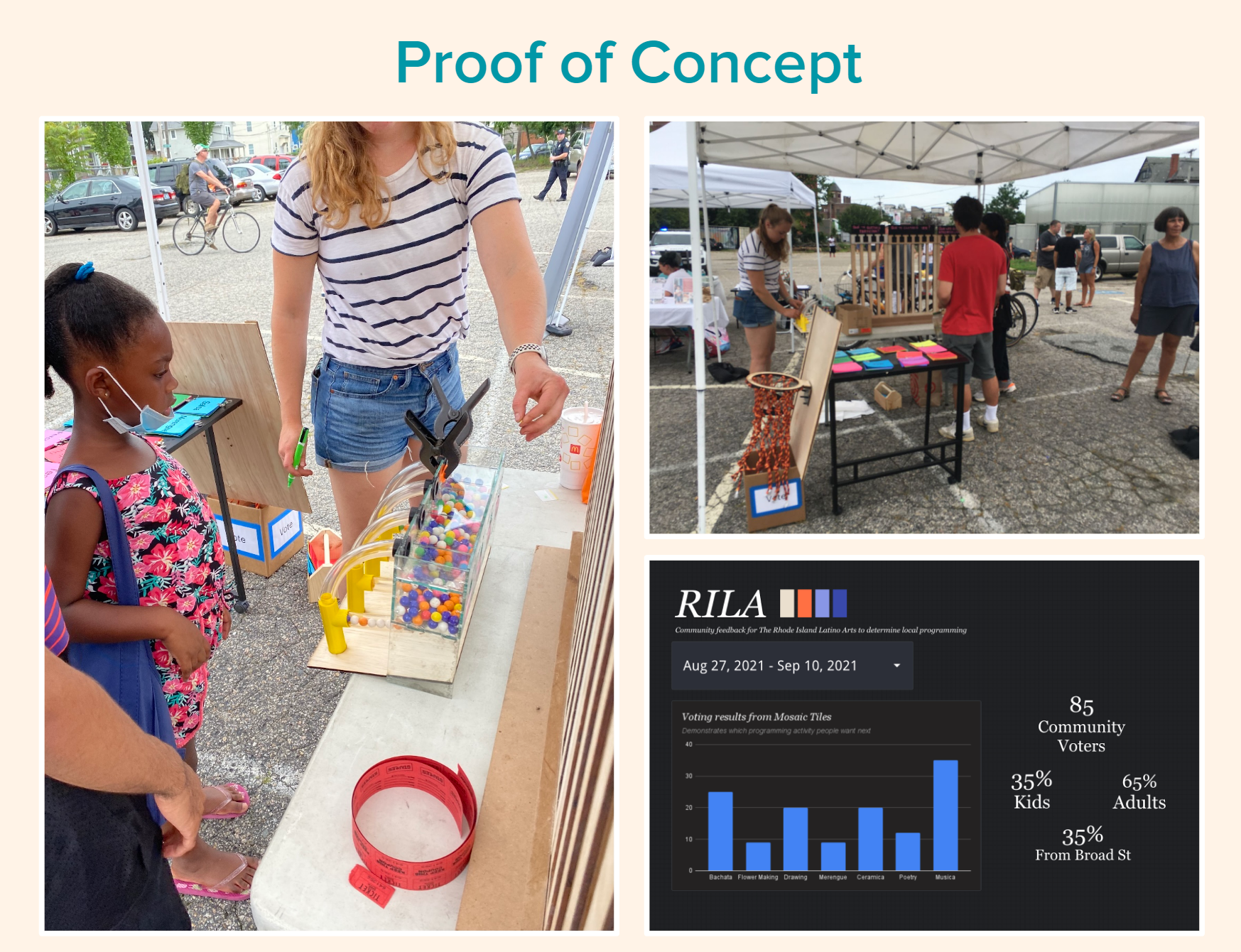Team & Strategy
In the first term of the Masters of Design Engineering program, we were assigned teams and a local stakeholder to work with on a community-based project. My team, Mark Araujo, Tim Taliaferro, Raghav Rmadya, and I, were paired with Marta Martinez, executive director of Rhode Island Latino Arts to help with her arts programming.
Role
All team members took on a variety of roles, but I specialized in developing research methods, physical prototyping, and presentations.
challenge
Marta from RILA came to us with an open prompt: "How might we activate art within the Broad St community using RILA's resources and flexible spaces with input from the community?". With our 8-week timeframe, we decided to focus on the latter half of that statement, "how might we help Marta gather input from the community," as this the first step to successful programming for the organization.



Helping out with one of Marta's Barrio Tours on Broad St
research and relationship building
We began by speaking to Marta along with other big players in the art world in Providence (shown above). We wanted to have a strong grasp on the cultural and artistic landscape we were going to be working with and how best to communicate with and be respectful of this community that we were not part of. From these conversations, we were able to build relationships with these community leaders, which allowed us access to community members through these leaders, as opposed to simply inserting ourselves as outsiders.
contemplating potential pitfalls
Through our research and personal experiences, we were also very aware that the relationship between increased public art and gentrification can be a challenging issue to manage. We thought deeply about this issue and wrapped our head around it with systems mapping (shown above) and long conversations with our stakeholders. We concluded that temporary and event-based art was the best way to avoid this potential pitfall, and this shaped the way we eventually ran our participatory design sessions.





ideation
We use tools like big idea dumps, journey mapping, systems mapping, feasibility vs. impact graphing, and risk assessment to brainstorm and assess solutions (see above). These tools are fantastic collaboration devices, and allow us to be rooted in research and critical thinking as we ideate.
participatory design
After ideation and discussions with our stakeholders, we decided to make a set of engagement tools that Marta would be able to use at events to determine what to program for future events. We wanted to make the tools engaging and fun, drawing people in and serving the purpose of including as many participants as possible. We began by testing the first prototypes we made with a proxy group on Brown's campus to understand how the tools needed to be improved functionally and aesthetically. After making these updates in our second set of prototypes, we were invited by Marta to participate in a Broad St block party where we were able to test them out within the community that they would ultimately be used.







PLAN FOR THE FUTURE
Our hope was to complete this set by creating a carrying case, facilitation guide, and tools for displaying the results, both to community members and to funders. Unfortunately, with our 8-week timeline, this was beyond our capacity, but we created the following user journey below to explain how these additional tools would be used.
